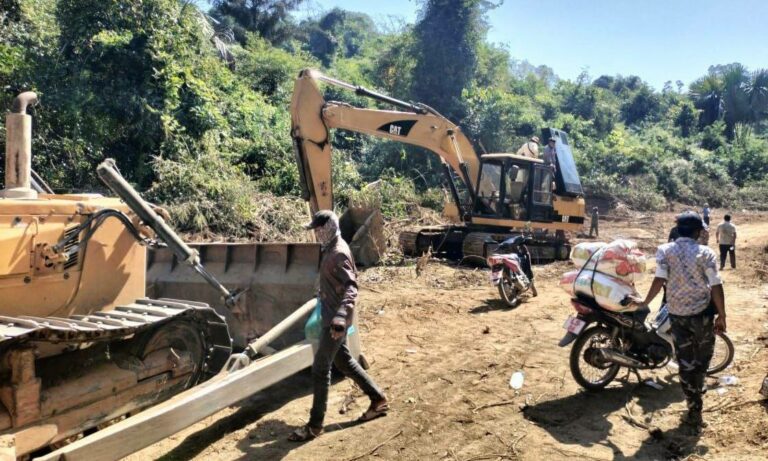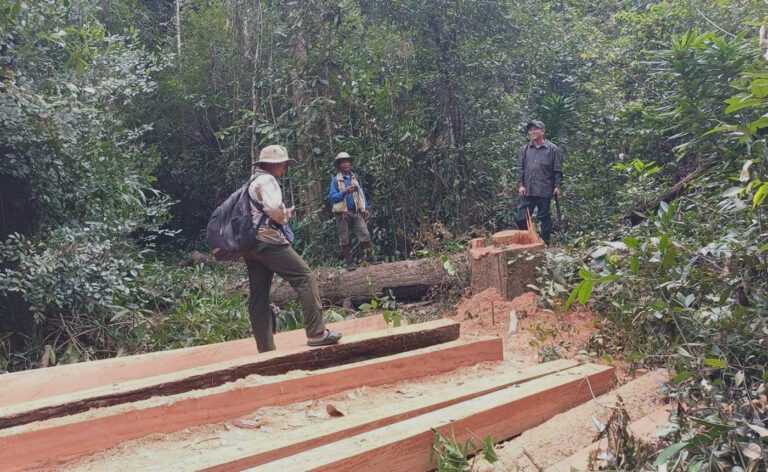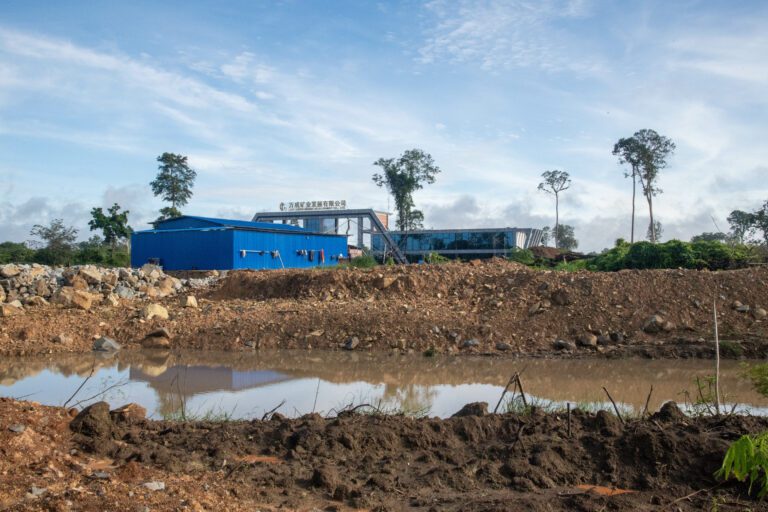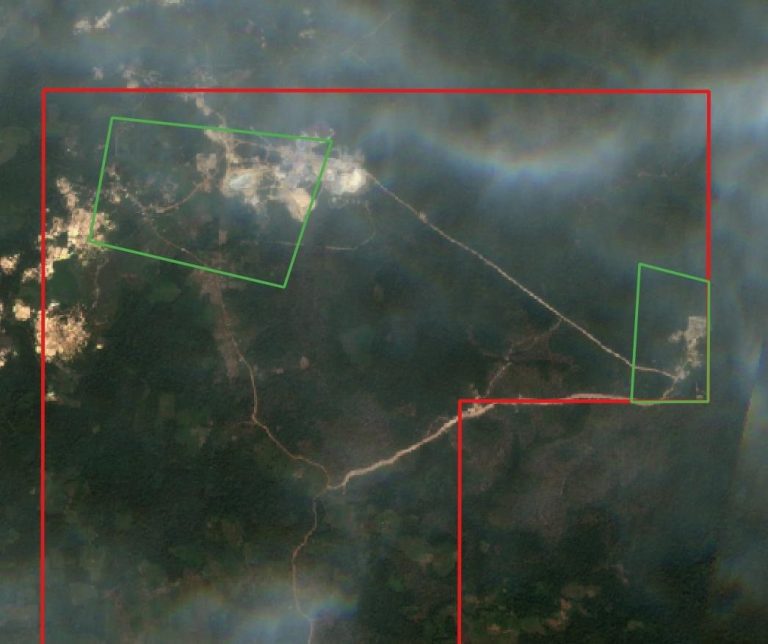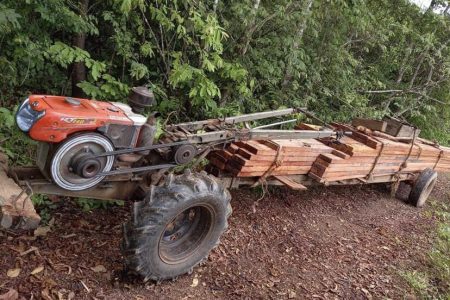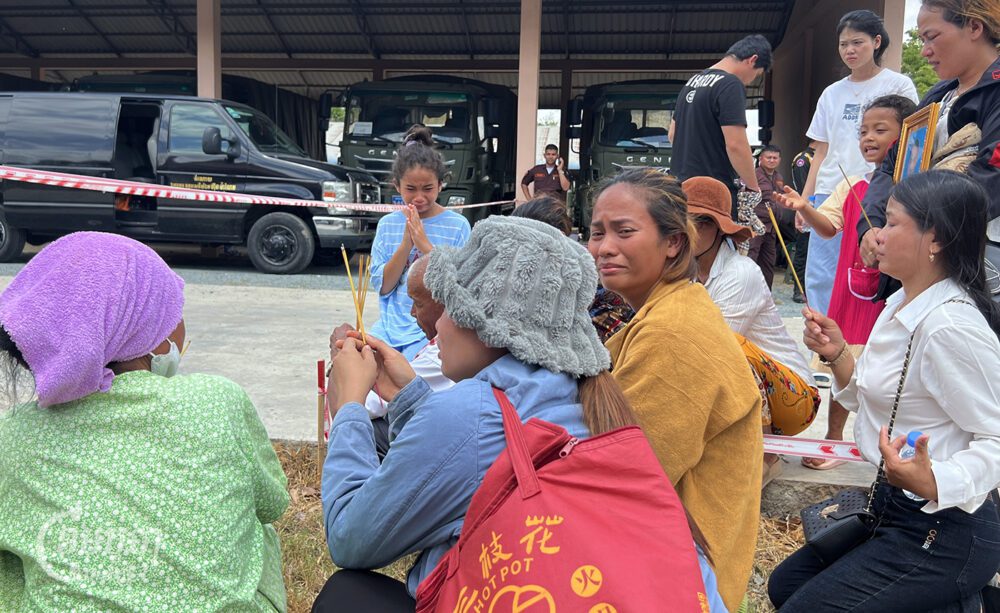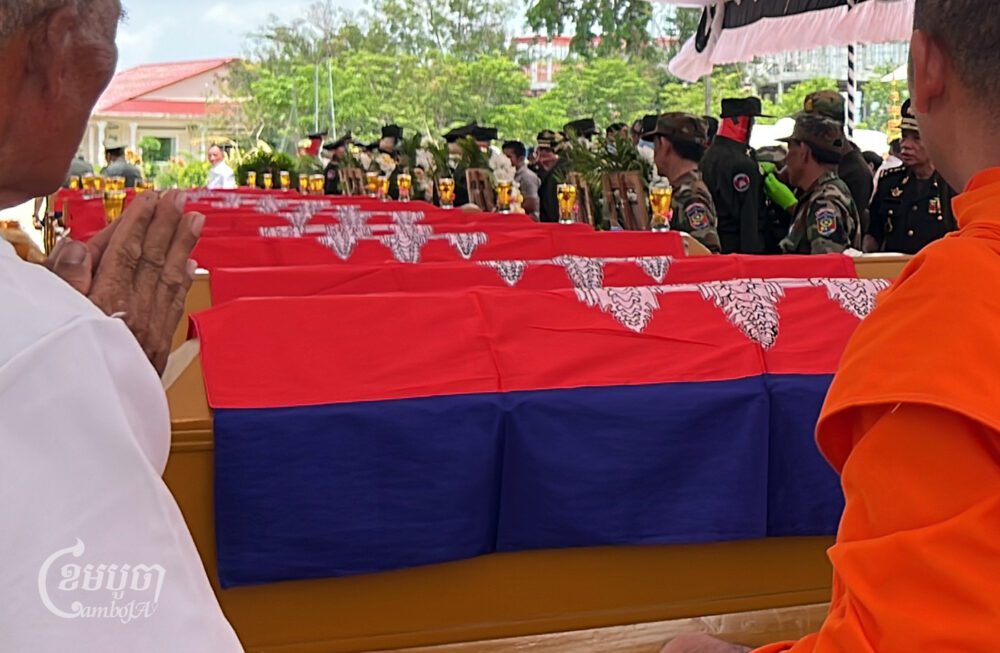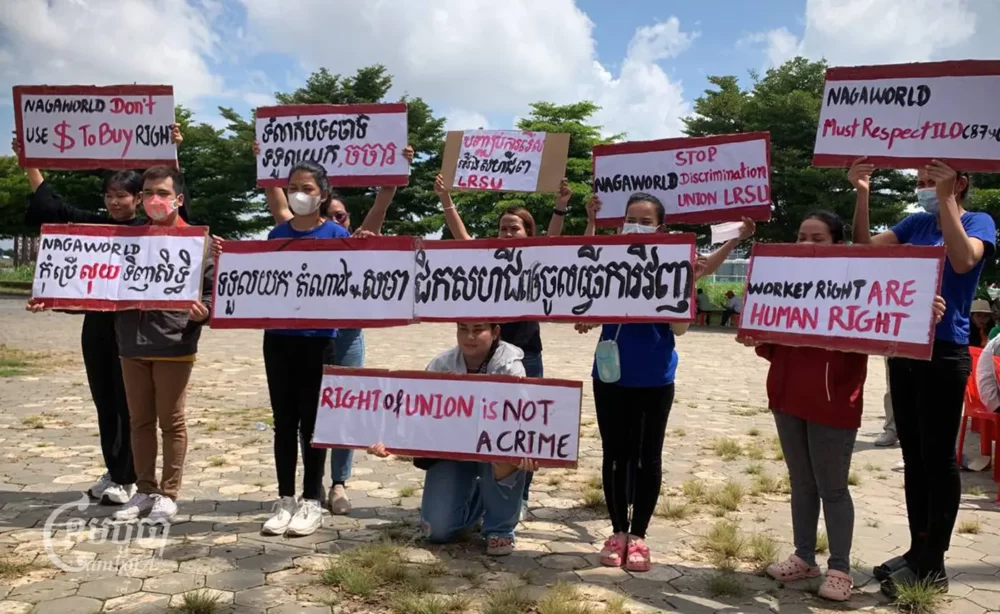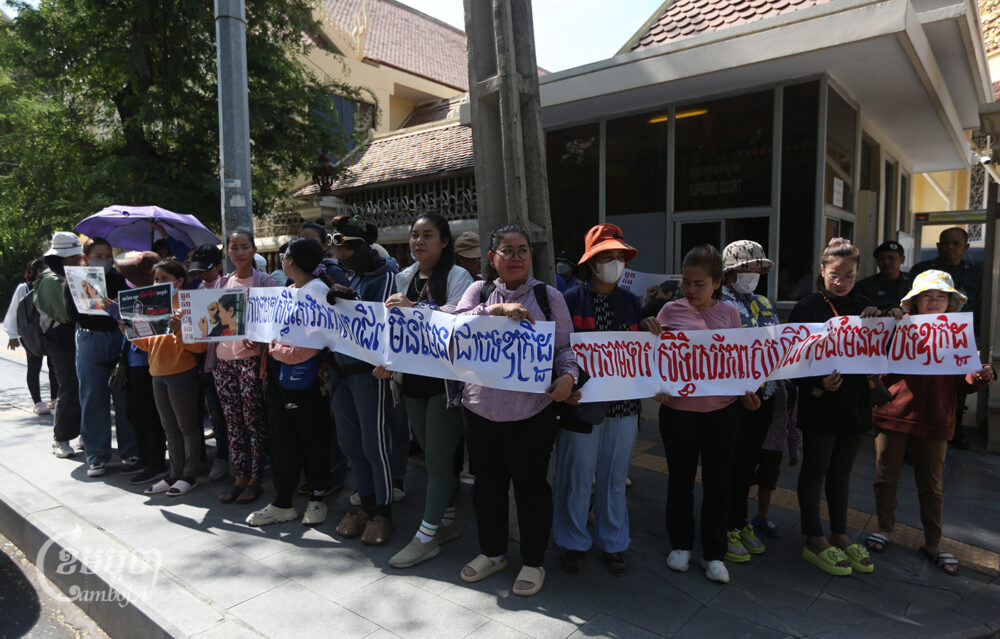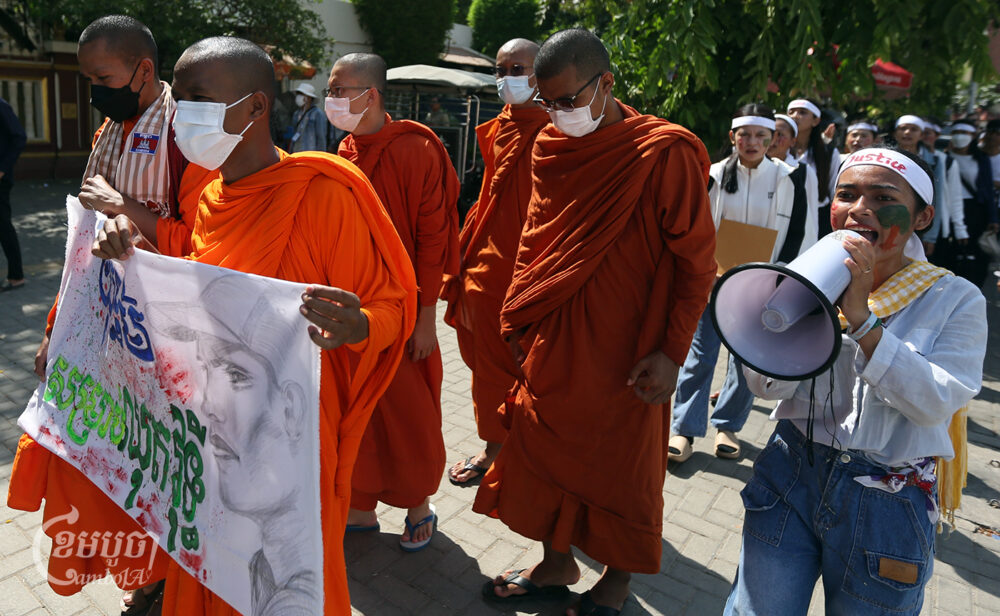The Prey Lang Protected Area has lost more than 100,000 hectares of forest between 2000 and 2019, more than half of which became plantations, according to a report released August 10 by the NGO Jesuit Service Cambodia’s Ecology Program and the Cambodian Youth Network.
To determine forest loss and recovery over the nearly two decade period, the Technical Report on Forest-Cover Change Detection in the Prey Land Protected Area of Cambodia compared satellite images, which showed that 58,138 hectares of forest was converted into plantations and 43,188 hectares became “non-forest.”
“102,436 hectares of forest became barren or were converted into crops, plantations, and human settlement areas during that time period,” the report says. “This number of hectares represents around 24% of the total land area of Prey Lang, making it a very significant phenomenon.”
The report determined the difference between forests and plantations based on whether the trees were growing randomly or in an evenly spaced pattern indicating they were planted by humans.
Only 1,111 hectares of forest gain was recorded in the report, which uses geographic information software QGIS to analyze maps and images. A total of 302,106 hectares of forest cover remain in Prey Lang as of 2019, according to the report, down from 404,542 in 2000.
Located in the north of Cambodia, Prey Lang forest covers about 5,000 square kilometers and is home to more than 250,000 people, most of whom belong to an indigenous group, which traditionally relied on the forest for its resources.
Liesl Lim, Program Manager of the Ecology Program at Jesuit Service Cambodia’s (JSC) said August 10 via email that the report analyzed five satellite images of Prey Lang forest taken in February 1999, March 2000, February 2018, March 2018, and February 2019. One pixel represents a 30 square meter plot of land.
JSC used QGIS to determine whether the land cover in each pixel was forest, non-forest, plantation or water, then compared the processed images taken 19 years apart to identify changes, she explained.
Liesl declined to comment on the causes of deforestation in Prey Lang or the impacts it has had, saying that the report was meant to be a jumping off point.
“We cannot comment on this because our study’s scope is limited to identifying the change in forest cover in Prey Lang,” she said. “It did not look at the impacts and causes of forest loss and deforestation.”
She said that the technical report could be used in future discussions on forest management protection efforts.
According to Sar Mory, research and advocacy program manager at Cambodian Youth Network, a significant amount of the forest cover loss was due to economic land concessions made by the government, as well as illegal logging.
Mory said a huge loss in forest cover in Prey Lang occurred due to land concessions given to private firms inside the forest before it was designated as a protected area in 2016. Prime Minister Hun Sen announced a moratorium on the granting of new land concessions in 2012, but ELCs that were already pending at the time were not cancelled, according to reports by The Cambodia Daily.
“Besides providing ELCs, we have also seen an increase in illegal logging and encroachment into forest land causing a loss of forest cover,” Mory said.
“I think that the 400,000 hectares of Prey Lang Wildlife Sanctuary will continue to decline if the government fails to prevent illegal encroachment to clear forestland and logging,” he said, adding that local communities traditionally rely on tapping resin trees to make a living.
Mory said he was disappointed that authorities have banned the Prey Lang Community Network from patrolling and protecting the area against forest crimes since January, while there have been reports of loggers being allowed to enter the area.
“I dare not accuse authorities of systematic collusion with loggers, but the public can make a judgment as to why the Prey Lang Community Network cannot patrol the forest but loggers can access it and transport timber,” he said.
He called on the government to take measures to prevent the severe deforestation at Prey Lang Wildlife Sanctuary.
Environment Ministry spokesman Neth Pheaktra said August 10 that the ministry does not comment on reports by civil society organizations, and that the two NGOs who conducted the report did not have permission to work in the protected area.
“Those organizations had conducted activities in natural protected areas without an agreement or a memorandum of understanding and permission from the Environment Ministry,” he said.
Pheaktra said the ministry and local authorities are continuing to stop natural resource offenses from occurring in Prey Lang.
In the first six months of 2020, rangers have conducted 13,804 patrols and investigated 3,689 illegal incidents, with 329 cases sent to the court, he said.
“The Environment Ministry has acknowledged that despite efforts to crack down on offenses, small-scale offenses will continue to happen, and the ministry will continue to prevent [them] and crackdown,” he said.
However, Hoeun Sopheap, a representative of Prey Lang Network in Kompong Thom province, said the report’s findings showed what he knows to be true the area is still rife with forestry crimes and illegal land clearing.
“For Kompong Thom province, there are two to three homemade trucks transporting timber every day,” he said.
Sopheap said he was disappointed that authorities have prohibited the network from organizing its own patrols and from joining the patrols by the provincial environment departments.
“I believe that it is one reason for the increase in forest crimes,” he said, adding that Prey Lang network has been banned from patrolling since February this year as the environment ministry says the group is not legally registered.
Kompong Thom Provincial Governor Sok Lou rejected the findings of the JSC report, saying they are inaccurate.
“I do not believe that there is a lot of lost forest because our officials, especially rangers under the jurisdiction of the Environment Ministry, are taking efforts to protect the forest,” he said.
“I acknowledge that there is still small scale logging, but our authorities have made efforts to prevent it,” Lou said.
Provincial authorities welcomed civil society groups’ patrols against forest crimes, he said, but they must follow the law and register with the relevant ministries first.
“We have not banned them for patrolling but we need them to cooperate with authorities, and we asked them to register but they do not follow us,” he said.



